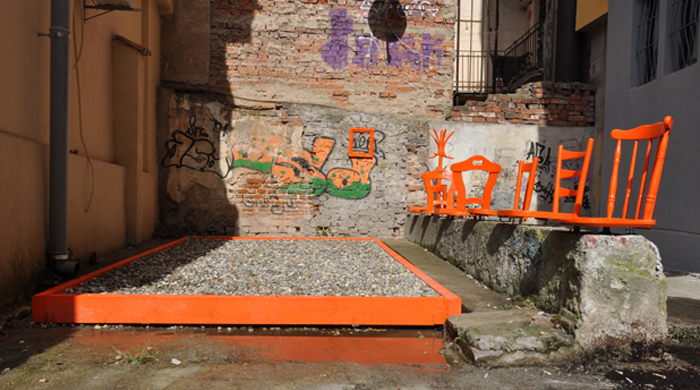A program of strategies and projects for residential areas from the socialist period in Bucharest and Romania.
The project provided a synthesized analysis, principles and case studies for future consistent intervention policies and rehabilitation models of these assemblies. The project was conducted in several stages between 2009 and 2010 and included research, case studies, urban interventions, conferences and international exhibitions, a documentary, a book and a dedicated brochure.
The Magic Blocks premise is actually a local reality: over 70% of Bucharest citizens are still living in apartment buildings built during the socialist period, which have degraded over time and bring about considerable economic and social issues. In addition, the poor connection of some citizens to urbanity and the focus on private space have led to the transformation of the former homogeneous structures into vertical villages. The essential idea of the project is that the rehabilitation of these neighborhoods should not be limited to technical repairs or partial interventions such as thermal insulation, but it should be considered as a complex urban regeneration, covering spatial, social and economic aspects. More than that, these huge neighborhoods not only represent problems, but also remarkable urban potential because of their social variation, density, millions of square meters of public spaces and so on. A realistic strategy for rehabilitation should involve a participatory mechanism: identifying problems together with the residents, definition, negotiation and acceptance, and communicating an economic and technical project and its realization in the form of coordinated actions.
Thus, the first phase of the project has identified areas and typologies with urban potential and activation and regeneration possibilities, continued with two exhibitions in Berlin and Bucharest, with a series of international conferences focusing on principles, strategies and concrete examples of revitalizing public space and achieving community projects. The project also contained consultations and interventions of colleagues from studioBASAR from Aviation quarter and the bilingual book Scenarios of the socialist blocks in Bucharest.
In 2010, the program was focused on a very specific situation in Bucharest – the activation of the spaces behind the socialist boulevards in the central area. Magic Blocks. Behind the concrete curtain combined research with viable proposals for action strategies on these spaces – from large-scale town planning to small-scale public space landscaping.
The chosen case study was Mosilor Avenue. To test the principles and initiate dialogue with the local community we initiated four urban and community interventions in the Moşilor area, meant to activate the area behind the block curtains as community spaces and public places in the fabric of the historical neighborhood. The project targeted very small patches of land, unoccupied and unclaimed, where various types of interventions have been organized, involving the residents, responding to their immediate needs but also respecting the development scenario of that particular place. The interventions – a passage way, a playground, a ladder as a bench and a dead end transformed into an outdoor lounge – were meant to test the project ideas, to act as an incentive to start the operations, to stimulate the inhabitants to express their views and to be more involved in changing their own living space. Indeed, the intervention which involved the largest number of people and which answered their most acute needs – the playground – was also the one that resisted the longest.
The project ended with an exhibition that presented the results and work stages, along with a short documentary and the Magic Blocks booklet.
Magic Blocks 2010 was a finalist project in the competition “European Prize for Public Space” organized by the Centre de Cultura Contemporània de Barcelona.
2009:
Organizers: Zeppelin, Point4 and Archis Interventions in cooperation with ATU, Space Syntax Romania, Hackenbroich Architekten, Platforma 9.1
Project financed by the Romanian Cultural Institute through Cantemir Program.
Supported by the Romanian Peasant Museum, the Union of Architects of Romania, ERSTE Foundation, the Austrian Cultural Forum Bucharest, the Embassy of the Netherlands in Bucharest, Art Rehau, Baumax, Wienerberger-Porotherm, BCR. Partners: Velux, Roca. Sponsors: Rockwool, Gealan, Resido, Fakro, Dulux.
2010:
Authors of the project: Zeppelin Association, Point4, Archis Interventions, Hackenbroich Architekten in cooperation with ATU, Space Syntax Romania, studioBASAR, Platforma 9.1
Supported by Erste Stiftung, the National Cultural Fund Administration, Goethe Institut, the Union of Architects of Romania, the Centre for Visual Introspection. Partner: Roca.


